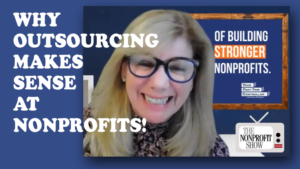The accounting world is never dull, despite what outward appearances and unfair stereotypes may lead one to believe. The Financial Accounting Standards Board (FASB) continually strives to improve the transparency, usefulness, and understandability of financial reporting formed by accounting principles Generally Accepted in the United States of America (GAAP). The unfortunate byproducts of this constant push towards improvement are chaotic periods of standards updates, transitions, and restatements. Just as sweeping new revenue recognition standards are being adopted and implemented, accountants now have to contend with more monsters that have been lurking beneath their beds – a slew of revised lease accounting rules (which we’ll call Accounting Standards Codification, or ASC, 842). ASC 842 will become effective for any financial years starting after December 15, 2021. So, for calendar year entities, that means you will need to implement the new accounting rules in 2022 (unless you have public bond offerings, in which case you should be adopting for the year ended 12/31/20). With these new rules come many new challenges. What we’ve outlined below is a general overview of the new lease standards (the nitty gritty of them is too expansive to fit into this abridged newsletter), the practical impacts for the companies and nonprofit organizations that are forced to adopt them, and our recommendations to best respond to these changes.
It’s hard to sufficiently boil down all of the major provisions of ASC 842, but just know that prior guidance required that capital leases be recorded as assets and related liabilities, with payments reducing the liability balance and creating interest expenses, while operating lease payments were charged directly to expenses, with no assets or liabilities created or affected. ASC 842 still mostly maintains the distinction between capital (now called financing) and operating leases, but all leases (including operating ones) will need to be recorded as right-of-use (ROU) assets and related liabilities. Certainly, there are intricacies to exactly how these assets and liabilities are valued, and how later payments are applied and recorded. Presentation on statements of cash flows and required disclosures are also different as a result of ASC 842 and depending on whether leases are financing or operating. For more detailed help on accounting of leases under ASC 842, consult our recent 2021 NFP Update. There are certain practical expedients available to nonprofits as well, and leases whose terms are shorter than one year may be exempt from the ASC 842 treatments.
The financial statement impact of adding these ROU assets and related liabilities can be significant. Organizations need to be prudent in foreseeing and anticipating these impacts so that candid conversations with key stakeholders can be held. The most obvious of these stakeholders are banks and other potential lenders who frequently attach covenants to lines of credit and other debt arrangements. These covenants typically factor in required interest payments (along with others) as some proportion of related debt. Do lease liabilities qualify as debt? Do the “interest” payments ascribed to these former-operating leases get carved out of these calculations? Debt arrangements tend to be conservative in nature, so it’s probably safe to assume that the most conservative interpretation likely applies. This means that your organization may be in compliance with certain debt coverage covenants in the pre-ASC 842 world but in violation in the post-ASC 842 world. Of course, it seems unfair and arbitrary, but it presents a problem nonetheless. Working capital ratios will be adversely affected as well, as the addition of ROU assets to the statement of financial position (balance sheet for for-profit entities) will principally be to the long-term section, where as a short-term portion of the related lease liability will be presented. So, if you have a current ratio or working capital covenant in place, be forewarned.
By now you realize how intimidating these new lease standards are, and how complicated and potentially-damaging their inevitable implementation will be for you and your organization. Proper planning is essential to best tackle these new standards. Start by identifying all lease arrangements and contracts that are impacted by the new standards. Begin to develop lists of their terms and analyze whether or not you think you can manage this implementation manually or if the volume and complexity is such that off-the-shelf software would be needed to assist. The more leases your organization enters, the more time and financial impact ASC 842 will have on your organization. From there you should determine whether or not you plan on restating prior years of financial statements or applying ASC 842 from the effective date-forward. It’s probably best to not restate though, unless you have a unique and compelling reason to do so. Speak with your auditors and look for their help and guidance to ensure that your proposed accounting treatment at the implementation date and forward seems accurate. Finally, and perhaps most importantly, you absolutely need to open dialogue with any major stakeholders who rely on your organization’s financial statements, be they banks, donors, government funding sources, the Board, or anyone else. They must be informed of the potential negative impact on your financial position, covenants, etc. so that you can proactively move forward and possibly modify current or future loan terms and/or seek covenant violation waivers.
It’s hard to not be cynical about ASC 842, or any major accounting standards updates for that matter. Does the supposed benefit truly outweigh the havoc created in transitioning? Debating the merits of these changes is a fruitless effort though. Look forward, not backward. ASC 842 is here to stay, so it’s best to preemptively understand its full impact on your organization and address any negative ramifications sooner rather than later. The clock is ticking. As always, we’re here to help.
This article was also featured in our newsletter NFP Advisor Vol. 24.

MATTHEW BURKE, CPA, CFE | PARTNER
Matt specializes in providing Cerini and Associates’ diverse array of midsized business clientele and nonprofit organizations with valuable consulting and assurance services. He prides himself on value-added, responsive, and innovative service to his clients; with a focus on forward-thinking and creative solutions. Matt has more than seventeen years of experience with many types of complex accounting, auditing, compliance, and general business matters that impact entrepreneurial, established, and nonprofit businesses.





No comment yet, add your voice below!